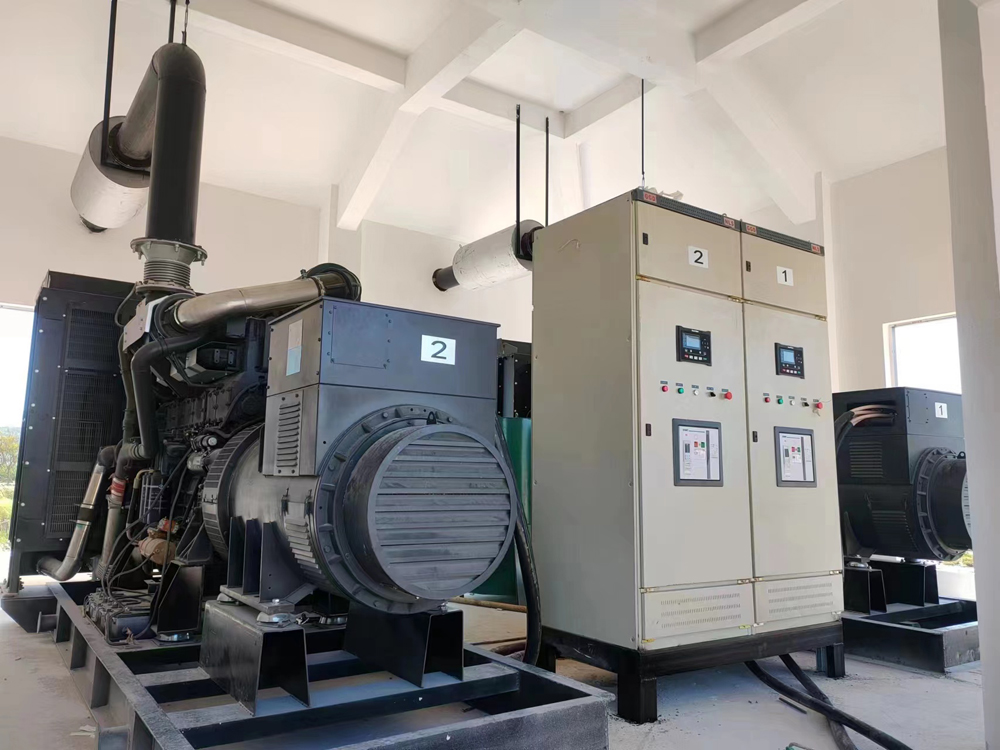Synchronizing a diesel generator set with the utility grid is a highly technical process that requires precision, safety precautions, and professional equipment. When done correctly, it ensures stable power supply, load sharing, and improved energy management. This article explains the key considerations for generator synchronization, including technical requirements, safety protocols, and operational steps.
Why Synchronization is Important
Generator synchronization allows hospitals, factories, and data centers to operate reliably during power fluctuations or outages. Proper synchronization ensures:
- Smooth transfer of load between utility and genset
- Protection of equipment from damage
- Enhanced energy efficiency and stability
Core Requirement: Professional Synchronization System
A diesel genset cannot be directly connected to the grid without a synchronization system. The system typically includes:
1. Parallel Controller – the brain that monitors parameters of both the grid and generator.
2. Auto-Synchronizer – adjusts generator speed (frequency) and voltage.
3. Power Management System (PMS) – manages active and reactive power distribution.
4. Protective Relays – provide safety against reverse power, overcurrent, and frequency deviations.
The Five Synchronization Conditions
For safe and accurate generator grid synchronization, five conditions must be met:
1. Equal Voltage – Generator RMS phase voltage must match grid voltage.
2. Equal Frequency – Generator frequency (50Hz/60Hz) must equal grid frequency.
3. Phase Sequence – Generator’s phase sequence (ABC) must match the grid.
4. Phase Angle Alignment – Voltage phase angles must align.
5. Waveform Matching – Generator output waveform must be a clean sine wave, aligned with grid waveform. Analogy: Synchronization is like merging into highway traffic — speed, lane, and timing must align perfectly.
Safety Precautions for Generator Synchronization
1. Reverse Power Protection – prevents damage from motoring effect.
2. Anti-Islanding Protection – disconnects genset when utility power fails.
3. Reliable Paralleling Switchgear – breakers rated for inrush current and interlocks.
4. Proper Grounding & Insulation – ensures safe current flow and prevents overvoltage.
5. Qualified Personnel – only trained engineers should operate synchronization systems. Learn more about our technical support services.
Step-by-Step Synchronization Procedure
Under an automatic synchronization control system, the process generally includes:
1. Pre-Start Check – inspect fuel, oil, coolant, and electrical connections.
2. Start Generator – let engine stabilize at no-load.
3. Synchronization – controller matches voltage, frequency, and phase.
4. Closing Breaker – breaker closes at zero phase angle difference.
5. Load Sharing – PMS distributes active and reactive power.
6. Load Reduction & Shutdown – gradually transfer load back to utility, disconnect, and shut down.
Risks of Incorrect Synchronization
Attempting to parallel a generator with the grid without proper synchronization equipment can:
- Damage generator shaft and windings
- Trip substation breakers, disrupting power supply
- Cause arc flash explosions and safety hazards
⚠Always use professional synchronization equipment and certified engineers.
Conclusion
Synchronizing a diesel generator with the grid is critical for safe, efficient, and reliable power operations. By meeting synchronization conditions, implementing safety protections, and following proper procedures, businesses can ensure continuous and stable electricity supply. Looking for reliable diesel genset synchronization solutions? Contact MAMO Power today to discuss your project.
Post time: Sep-09-2025

















